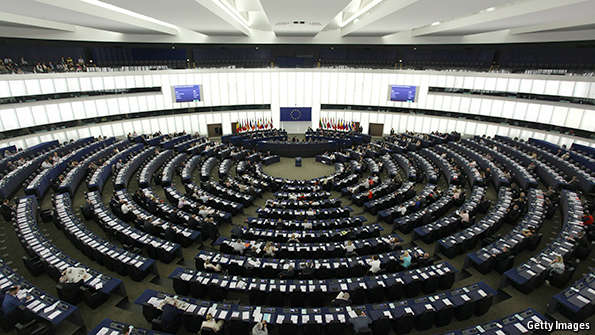The Economist explains: Everything you need to know about European political union
Not exactly. Some of the EU’s founders—and even that early advocate of European confederation, Winston Churchill—wanted to create a United States of Europe, with a central federal government. But the series of treaties that have brought the EU into being over the past six decades have left it with a hybrid structure: in many ways it remains an international organisation, in which the constituent states are the main decision-makers; in others it resembles a federal system. Euro-enthusiasts hope that, over time, the commitment to “ever-closer union” written into the EU’s founding treaty will bring less United Nations and more United States.
Euro-enthusiasts see the existing EU structures as the embryo of a federal state. The European Commission, with a commissioner from each member state and a bureaucracy of 20,000 people, is the would-be executive branch. The European Parliament is the lower house, and the Council of Ministers (composed of ministers from each member-state government) is the future senate. The European Court of Justice can already over-rule national courts. Jean-Claude Juncker, the president of the commission, was indirectly elected by the European Parliament in an attempt to elevate him as a sort of prime minister.
But in reality, most of the power resides with member-states. So alongside Mr Juncker there is another “president”: Donald Tusk, the president of the European Council, which consists of the member-states’ leaders. European legislation is proposed by the commission, but has to be approved by both the parliament and the Council of Ministers. The most important decisions, such as whether to bail out Greece or share asylum-seekers, are taken collectively by national leaders at the European Council. In this sense, the EU is less United States and more United Nations.
Read More: The Economist explains: Everything you need to know about European political union | The Economist

